The Ultimate Guide To Rhubarb Companion Plants
The Ultimate Guide to Rhubarb Companion Plants
Rhubarb is a delicious and versatile vegetable that can be used in a variety of dishes. It is also a relatively easy plant to grow, but there are a few things you can do to improve its yield and health. One of the most important things you can do is to plant rhubarb with the right companion plants.
Companion planting is the practice of planting different types of plants together in order to benefit each other. Some plants help to attract beneficial insects, while others help to deter pests. Some plants even help to improve the soil quality or water retention.
When choosing companion plants for rhubarb, there are a few things you need to keep in mind. First, you need to consider the needs of the rhubarb plant. Rhubarb prefers full sun and well-drained soil. It also needs a lot of nitrogen, so you will need to fertilize it regularly.
Second, you need to consider the pests and diseases that are common to rhubarb. Rhubarb is susceptible to a number of pests, including aphids, whiteflies, and slugs. It is also susceptible to a few diseases, such as rhubarb crown rot and rhubarb leaf spot.
With these factors in mind, here are some of the best companion plants for rhubarb:
- Alliums: Alliums, such as garlic, onions, and chives, help to deter pests and diseases. They also help to improve the soil quality.
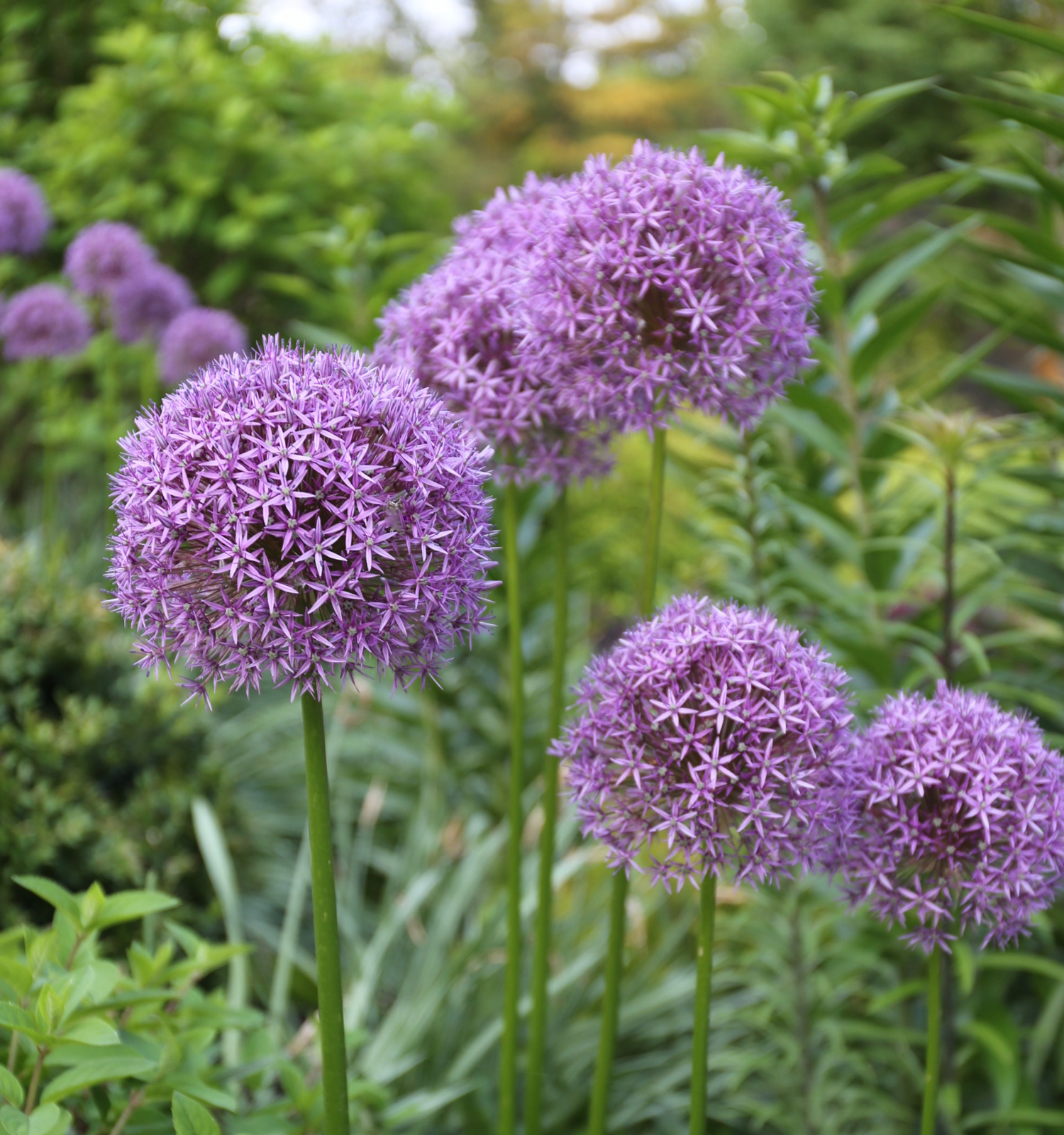
- Brassicas: Brassicas, such as broccoli, cabbage, and cauliflower, help to attract beneficial insects. They also help to improve the soil quality.

- Strawberries: Strawberries and rhubarb are both perennials that grow well together. They are also both delicious, so you can enjoy them both in the same dish.
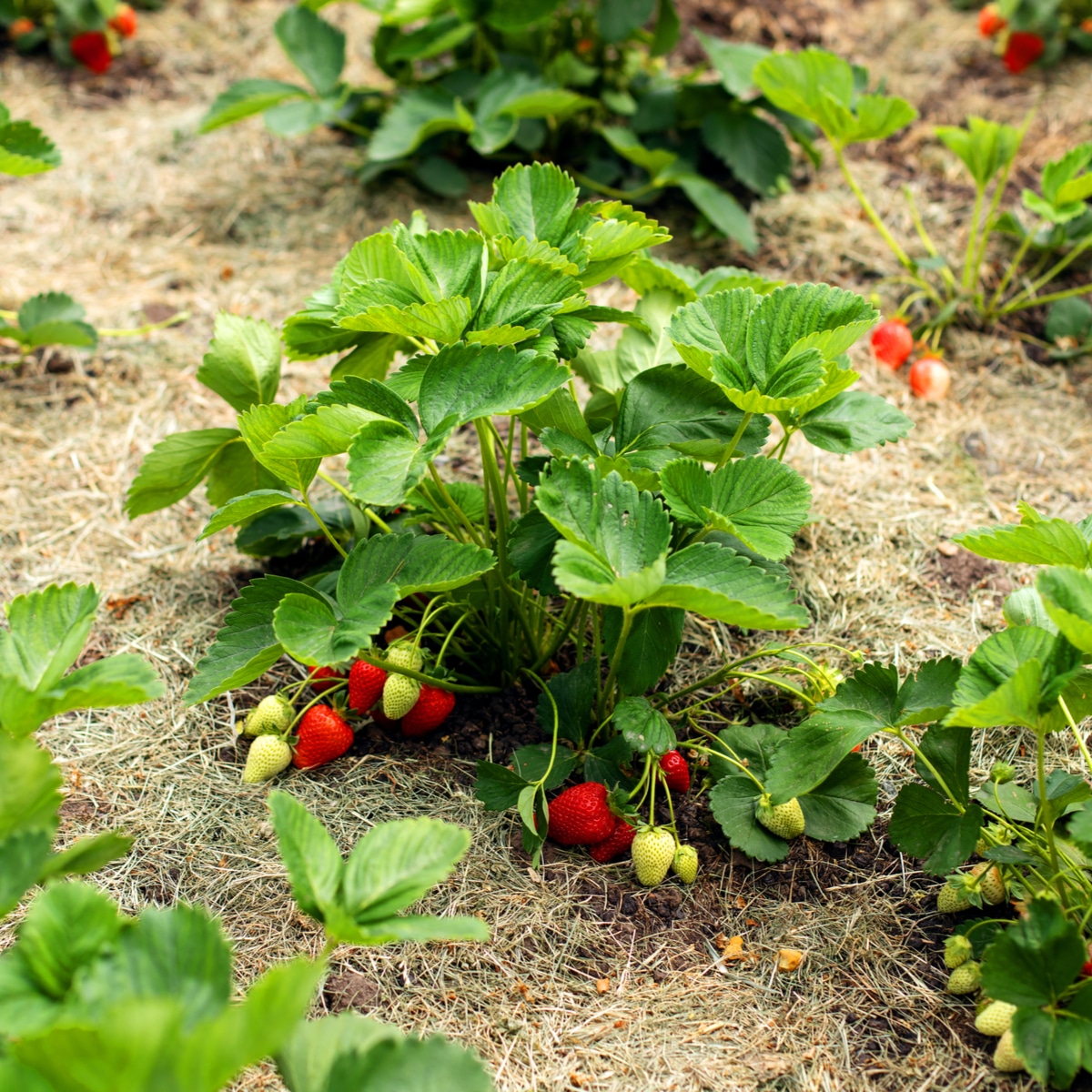
- Nasturtiums: Nasturtiums help to deter pests and diseases. They also add a splash of color to your garden.

- Beans: Beans help to fix nitrogen in the soil, which benefits the rhubarb plant.
- Herbs: Herbs, such as sage, mint, and thyme, help to deter pests and diseases. They also add flavor to your dishes.
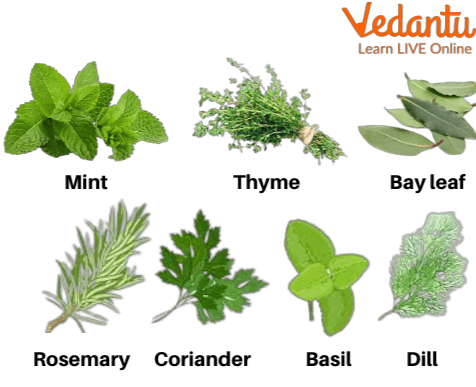
These are just a few of the best companion plants for rhubarb. When choosing companion plants, it is important to do your research and select plants that will benefit each other. With a little planning, you can create a thriving rhubarb patch that will produce delicious vegetables for years to come.
Rhubarb Companion Planting
Rhubarb is a delicious and versatile vegetable that can be used in a variety of dishes. But did you know that companion planting can help to improve the growth and health of your rhubarb plants?
Companion planting is the practice of planting certain plants together to benefit each other. There are a number of different plants that can be good companions for rhubarb, including:
- Alliums: Alliums, such as garlic, onions, and chives, help to repel pests and diseases from rhubarb plants.
- Brassicas: Brassicas, such as broccoli, cabbage, and kale, help to improve the soil quality around rhubarb plants.
- Legumes: Legumes, such as beans and peas, help to fix nitrogen in the soil, which can benefit rhubarb plants.
- Strawberries: Strawberries help to suppress weeds and pests around rhubarb plants.
If you're interested in learning more about rhubarb companion planting, I recommend visiting Gardenia Inspiration. This website has a wealth of information on the topic, including a list of the best plants to grow with rhubarb, as well as tips on how to create a successful companion planting scheme.
FAQ of rhubarb companion
Q: What are the best companions for rhubarb?
A: Rhubarb is a good companion plant for many other vegetables, including:
- Alliums: The allium family includes garlic, onions, and chives. These plants help to repel pests and diseases, and they also add flavor to rhubarb dishes.
- Brassicas: The brassica family includes cauliflower, broccoli, cabbage, and kale. These plants help to suppress weeds and improve the soil quality.
- Legumes: Rhubarb's relationship with beans and peas is actually beneficial to both plants. The legumes fix nitrogen in the soil, which helps to feed the rhubarb.
- Strawberries: Strawberries and rhubarb are both heavy feeders, so they benefit from being planted together. The strawberries help to shade the rhubarb's roots, which helps to prevent them from drying out.
- Melons: Melons and rhubarb can be planted together, but they should be spaced at least 3 feet apart. The melons will help to keep the rhubarb's roots cool, and the rhubarb will help to deter pests from the melons.
Q: What are some plants that should not be planted near rhubarb?
A: There are a few plants that should not be planted near rhubarb, including:
- Tomatoes: Tomatoes and rhubarb are both members of the nightshade family, and they can compete for nutrients.
- Potatoes: Potatoes and rhubarb can both accumulate toxins in their leaves, so it is best to avoid planting them together.
- Cucumbers: Cucumbers and rhubarb can both attract the same pests, so it is best to avoid planting them together.
- Beans: Beans can deplete the nitrogen in the soil, which can harm the rhubarb.
- Peas: Peas can also deplete the nitrogen in the soil, so it is best to avoid planting them near rhubarb.
Q: What are the benefits of planting rhubarb with other plants?
A: There are several benefits to planting rhubarb with other plants, including:
- Improved pest and disease control: Some companion plants, such as alliums, can help to repel pests and diseases. This can help to keep your rhubarb healthy and productive.
- Improved soil quality: Some companion plants, such as legumes, can help to improve the soil quality. This can provide your rhubarb with the nutrients it needs to thrive.
- Increased yields: Some companion plants, such as strawberries, can help to increase the yields of rhubarb. This is because they help to shade the rhubarb's roots, which helps to prevent them from drying out.
- Enhanced flavor: Some companion plants, such as strawberries, can enhance the flavor of rhubarb. This is because they release volatile compounds that react with the rhubarb's acids to create new flavors.
Q: How far apart should rhubarb be planted from other plants?
A: Rhubarb should be planted at least 3 feet apart from other plants. This will give the rhubarb enough space to grow and spread. It will also help to prevent competition for nutrients and water.
Q: When is the best time to plant rhubarb with other plants?
A: Rhubarb can be planted in the spring or fall. However, it is best to plant it in the spring if you are planting it with other plants. This is because the other plants will have time to establish themselves before the rhubarb starts to grow.
Image of rhubarb companion
5 different images of "rhubarb companion" from Pinterest:
- Rhubarb and mint. Mint is a great companion plant for rhubarb because it helps to repel pests and diseases. It also has a refreshing flavor that pairs well with the tartness of rhubarb.
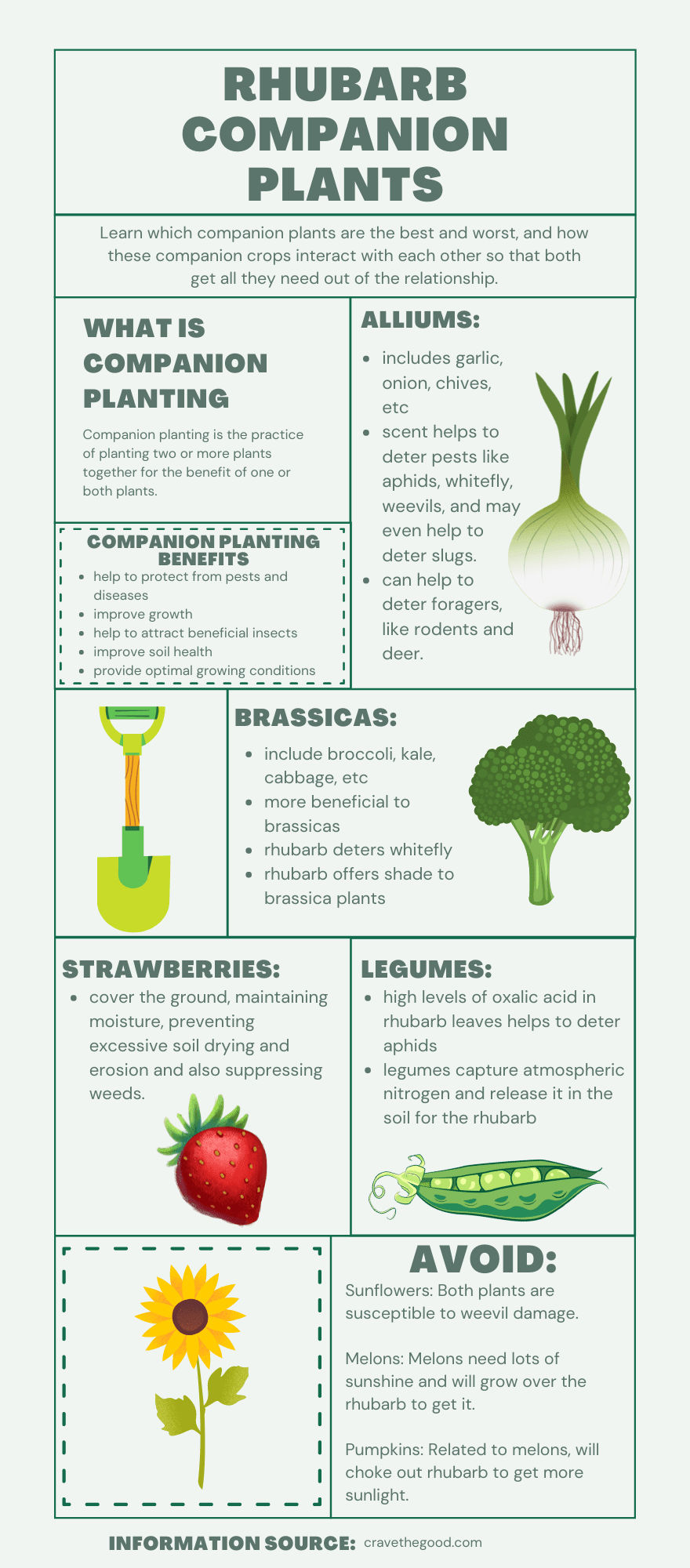
- Rhubarb and strawberries. Strawberries and rhubarb are a classic combination that is both delicious and beautiful. They can be planted together in the garden or used in pies, crumbles, and other desserts.

- Rhubarb and chives. Chives are another good companion plant for rhubarb because they help to deter pests. They also have a mild onion flavor that can add depth to dishes made with rhubarb.

- Rhubarb and lettuce. Lettuce is a good companion plant for rhubarb because it helps to suppress weeds. It also provides shade for the rhubarb roots, which can help to keep them cool in hot weather.
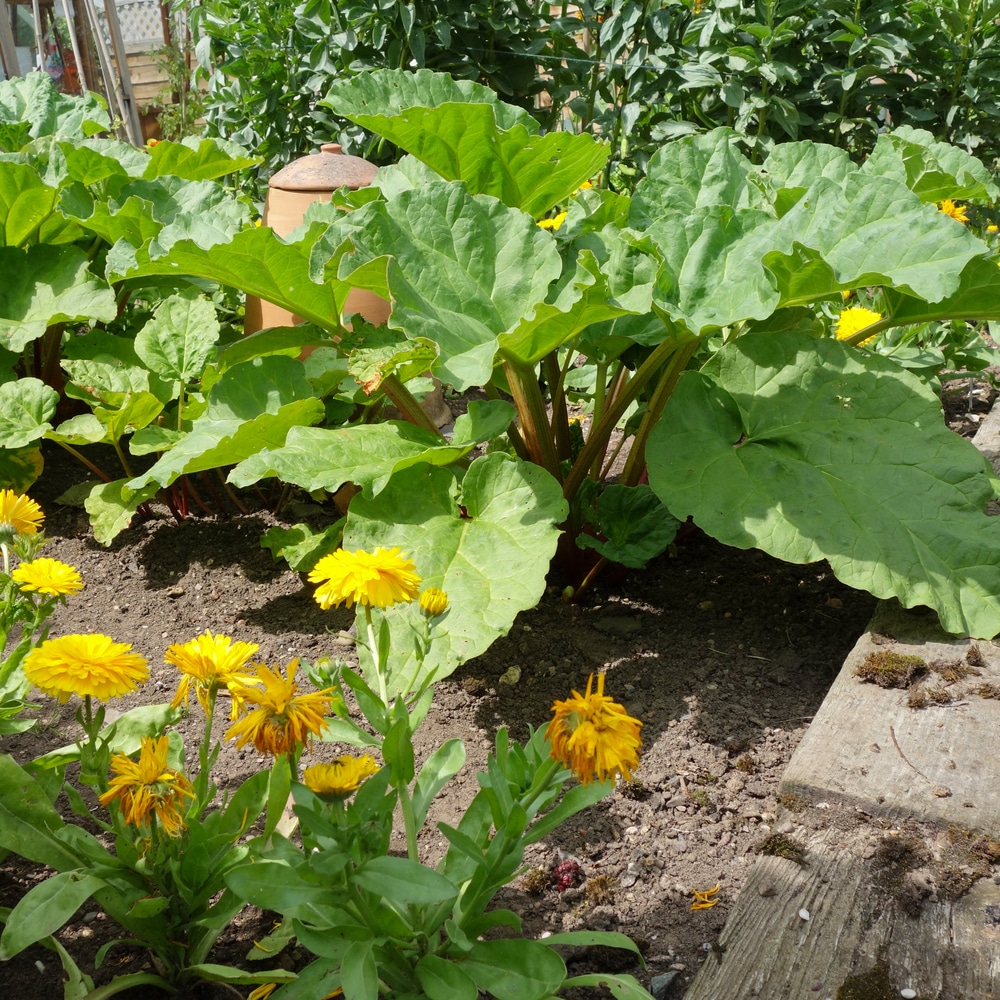
- Rhubarb and nasturtiums. Nasturtiums are a beautiful and edible flower that can be planted with rhubarb. They help to attract pollinators, which can help to improve the rhubarb's fruit production.
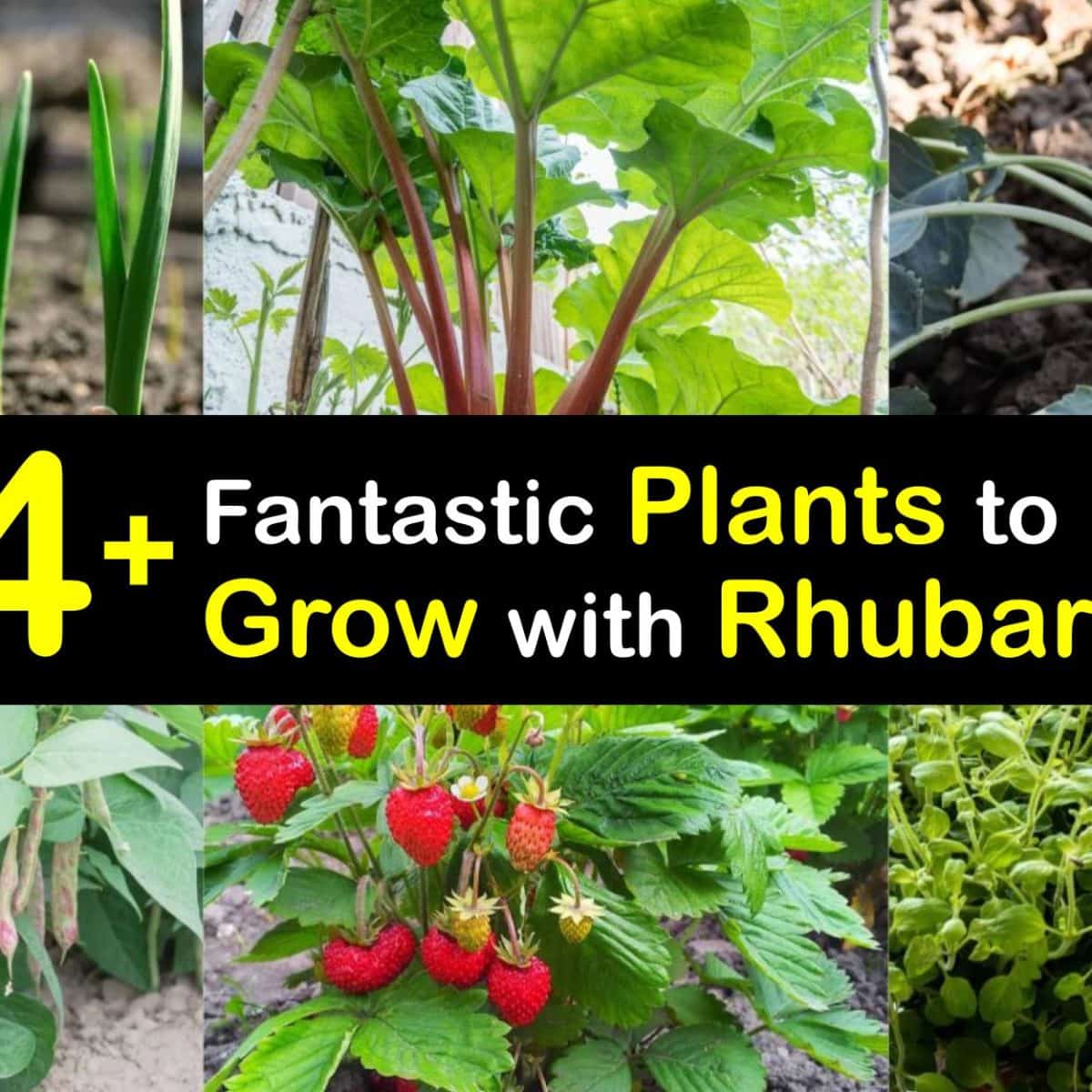
Post a Comment for "The Ultimate Guide To Rhubarb Companion Plants"